Intern Projects, Summer
2007
Interns:
Allison Rein
Adam Wiater
Rachel Mirsky
Death Certificate Conservation
(Adam Wiater, Rachel Mirsky):
County Death certificates
from 1911 through the 1920s were placed in wraparounds made from
thick cardboard stock. Each
individually constructed box helps to protect these death records from
further wear-and-tear in the future
as some of the most frequently requested records by patrons.
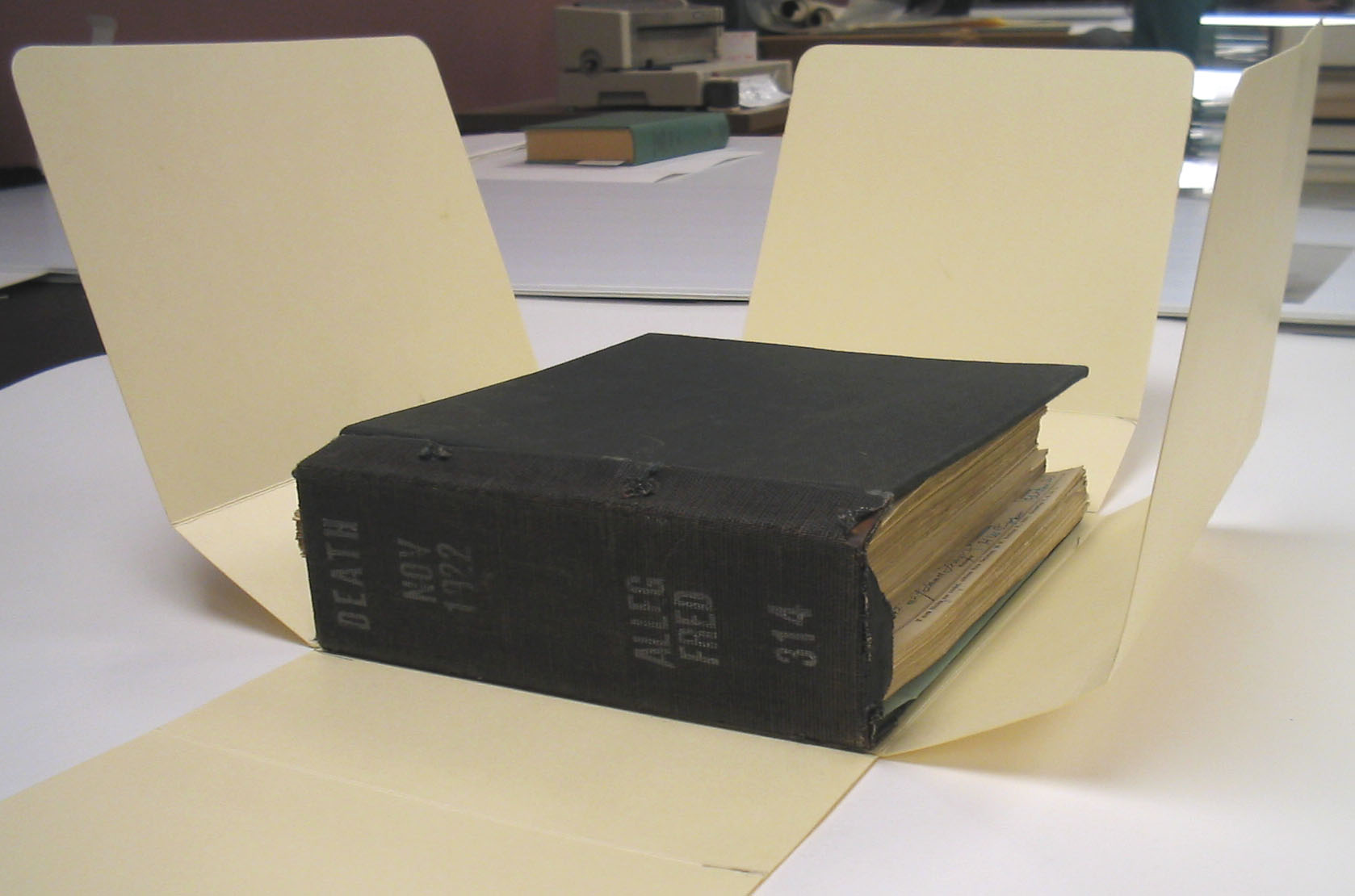
This death record from November
1922 includes Maryland counties Allegheny through Frederick.
Heat-Set Tissue Mends (all interns):
Interns used heat-set tissue to repair
tears in documents and book pages to strengthen paper and to prevent
more tears which may make a document
more difficult to read, copy and scan. Heat-set tissue, of a similar
consistency to tissue paper, with heat-activated glue on the other side,
is applied to the
tear
on both sides of the document.
A tacking iron is then used to activate the glue so that the tissue adheres
to the document. In more
severe cases, when a document is missing large areas of paper containing lost text,
heat-set tissue is cut to replace
the missing areas to strengthen the missing portion.

This 1901 document, a page from
an obstetrics record from a physician in Frostburg, Maryland,
illustrates the end result of heat-set
tissue repair when whole segments of a document are missing. The
heat-set tissue does not cover
the original document, it merely fills-in the hole.
Book Protection & Repair
(Allison Rein):
Books that are not in need
of repair, but require a protective cover to minimize mishandling
of spines and covers and to prevent
future repair, are fitted with mylar covers.
However, books that require either
minor or major repairs demand more hands-on attention. Books may
be
detached from their spines, detached
from original sewing and contain multiple tears. In order to fix
these
problems, books are repaired by:
-
Using heat-set or Japanese tissue to
mend small defects on book covers or pages
-
Disbinding and cleaning books to prepare
for proper rebinding
-
Removing glue from spines
-
Tipping on new pages
-
Adding endsheets
-
Making book covers from cloth and book
board
-
Applying paste to reattach book spines
Below are a series of images
illustrating a book, Old Somerset on the Eastern Shore of
Maryland, before and after
its repair.
BEFORE
 Book
seperating from its binding Book
seperating from its binding
 Close-up
of damaged binding Close-up
of damaged binding
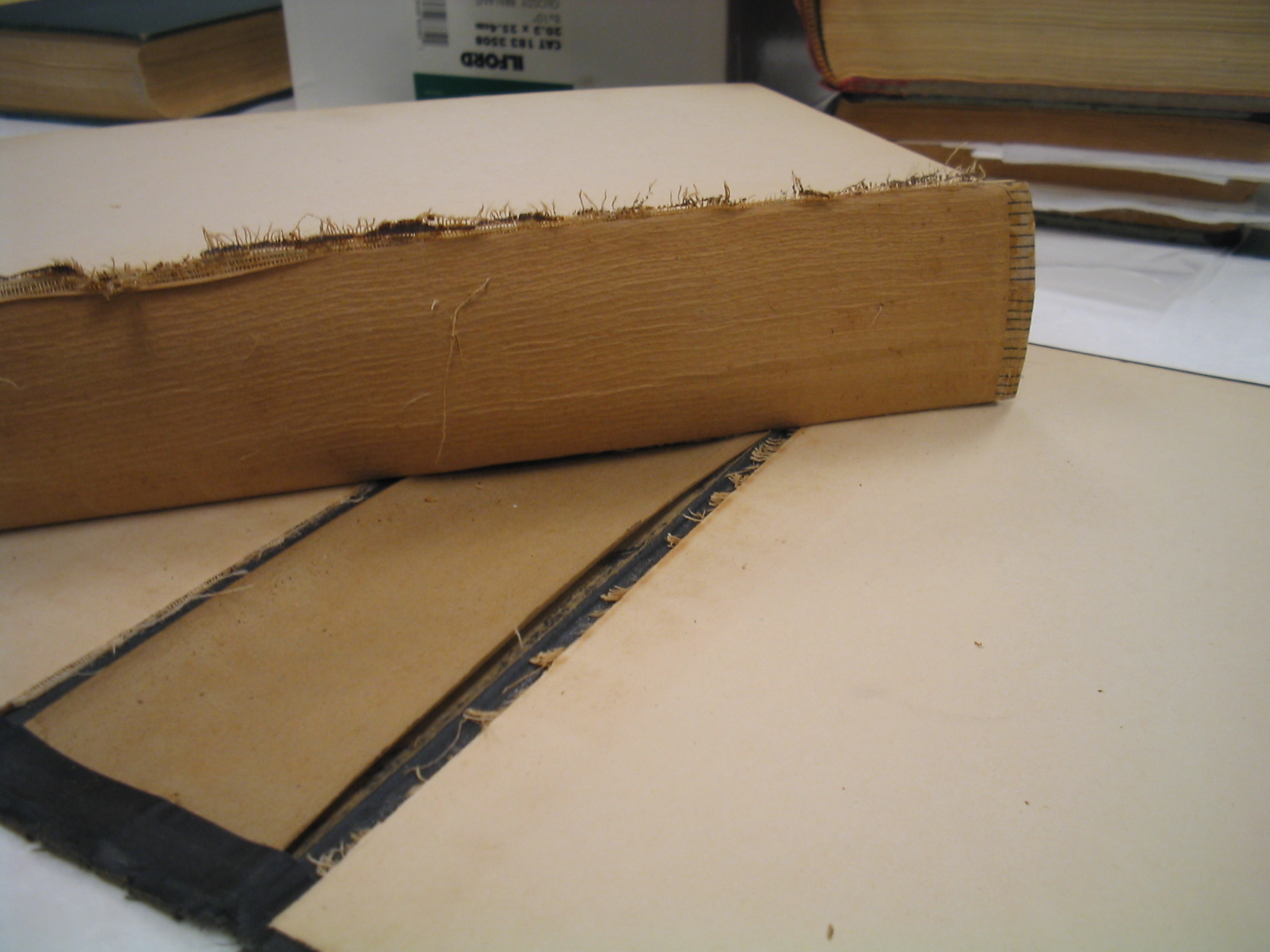 Spine
removed before repairs begin Spine
removed before repairs begin
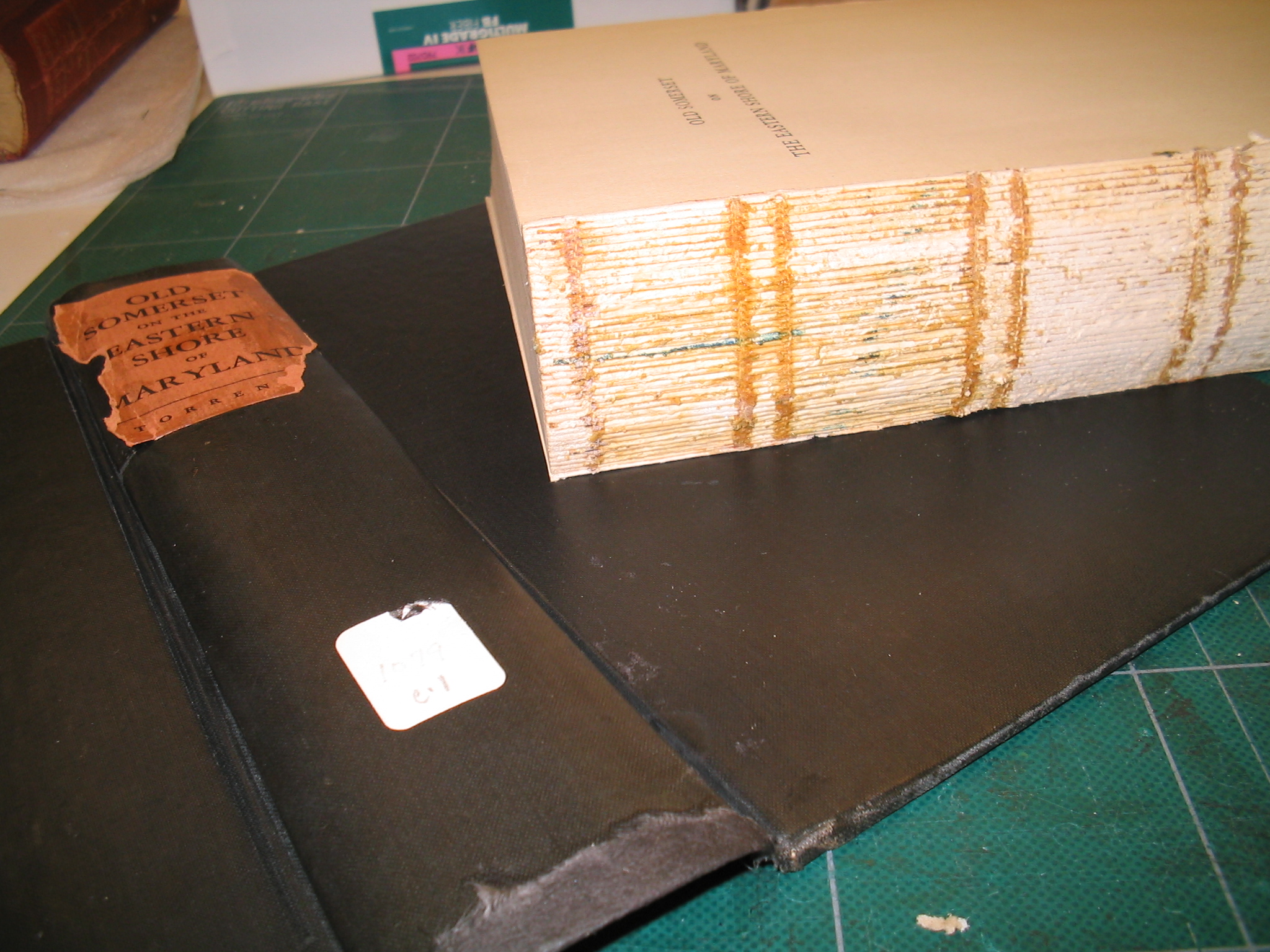
Glue has been removed from spine.
You can still see remnants of the yellow glue on the spine.
AFTER
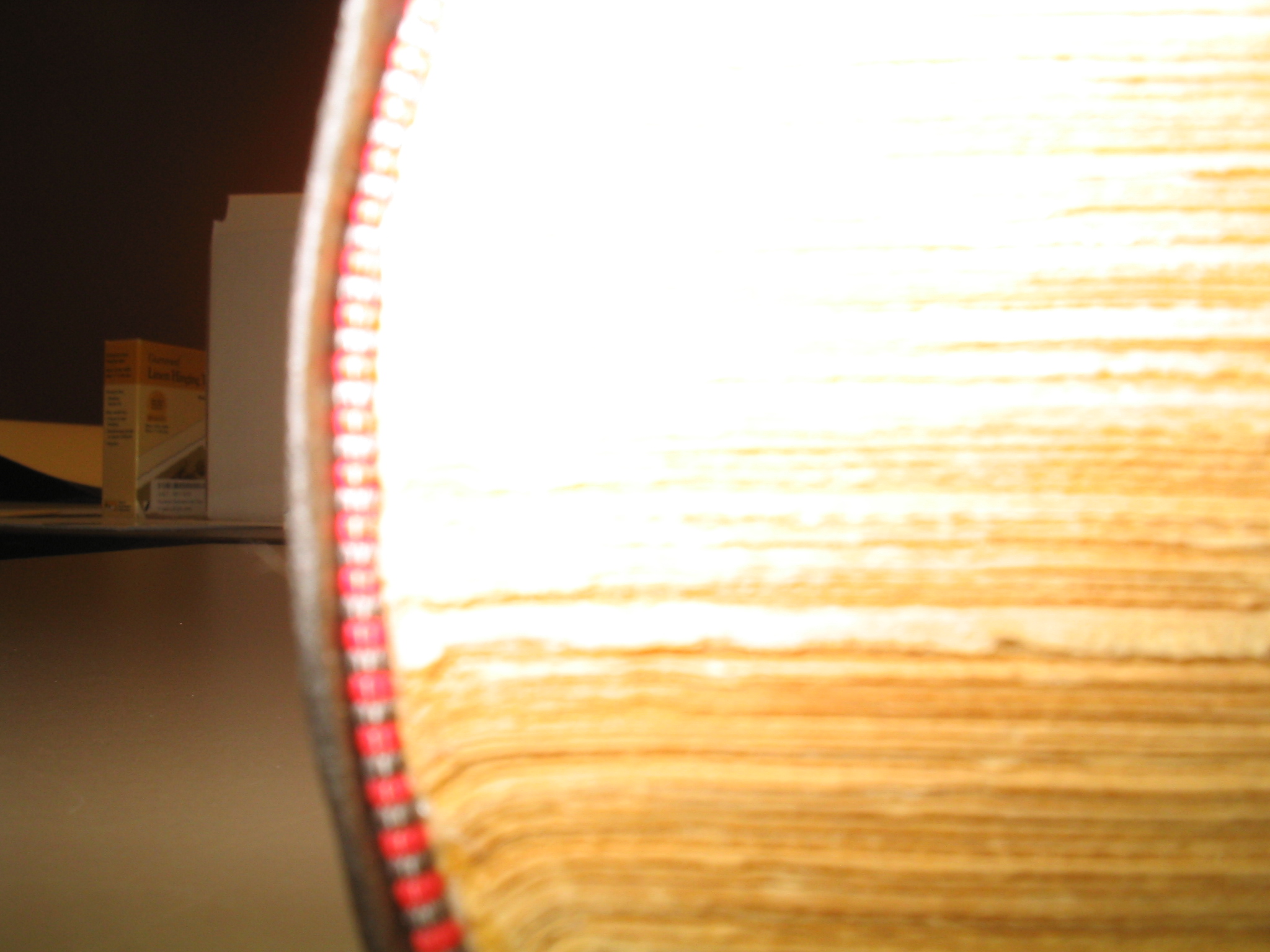
Side angle of the binding after
completion. the red
fabrics around the binding. There is no longer any gaping near the spine.
are called "headbands".
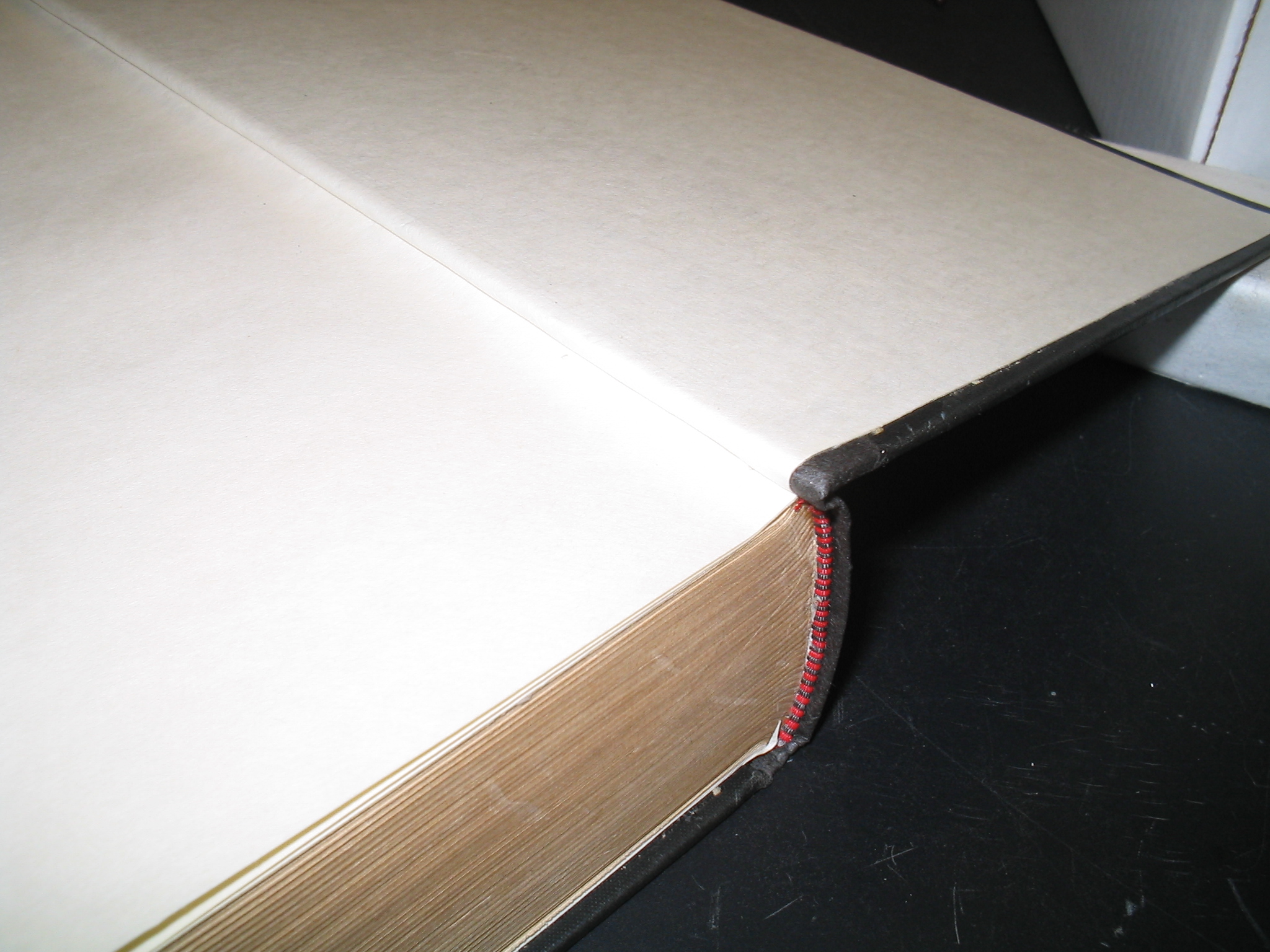 Another
angle of completed spine with exposed new endsheets on left Another
angle of completed spine with exposed new endsheets on left
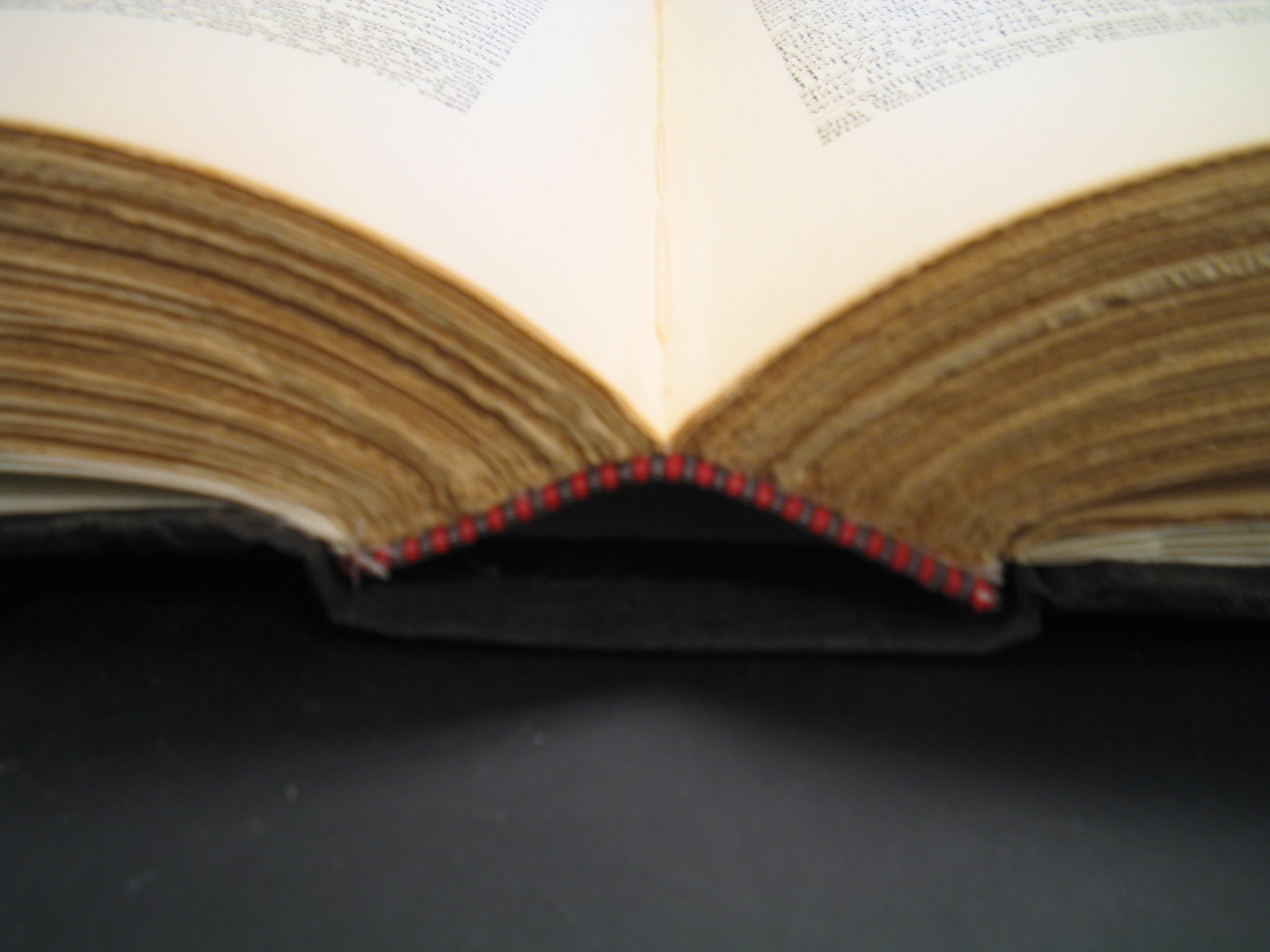 Angle
showing completed book with correct spine and sewing Angle
showing completed book with correct spine and sewing
Vinegar Syndrome (Adam Wiater)
The Vinegar Syndrome project involves
the testing of how much acid a particular reel of acetate microfilm contains.
Microfilm produced between approximately
the 1930s and 1970s made from acetate contained a high acidic content
which makes these films difficult
to use today. Acid in these films cause the film to self-destruct and can affect
non-acidic films
by making them acidic as well.
In order to test for the Vinegar Syndrome, named for the vinegar smell
given off by
acidic film, we use A-D strips (the
green strip in the image below). The green strip changes color over
time to indicate
an acid level from blue (0) indicating
little or no acid to yellow (3) showing a high acid content. Films
with vinegar
syndrome should should be stored
seperately from other films and scanned, if possible, before they disintegrate
completely.
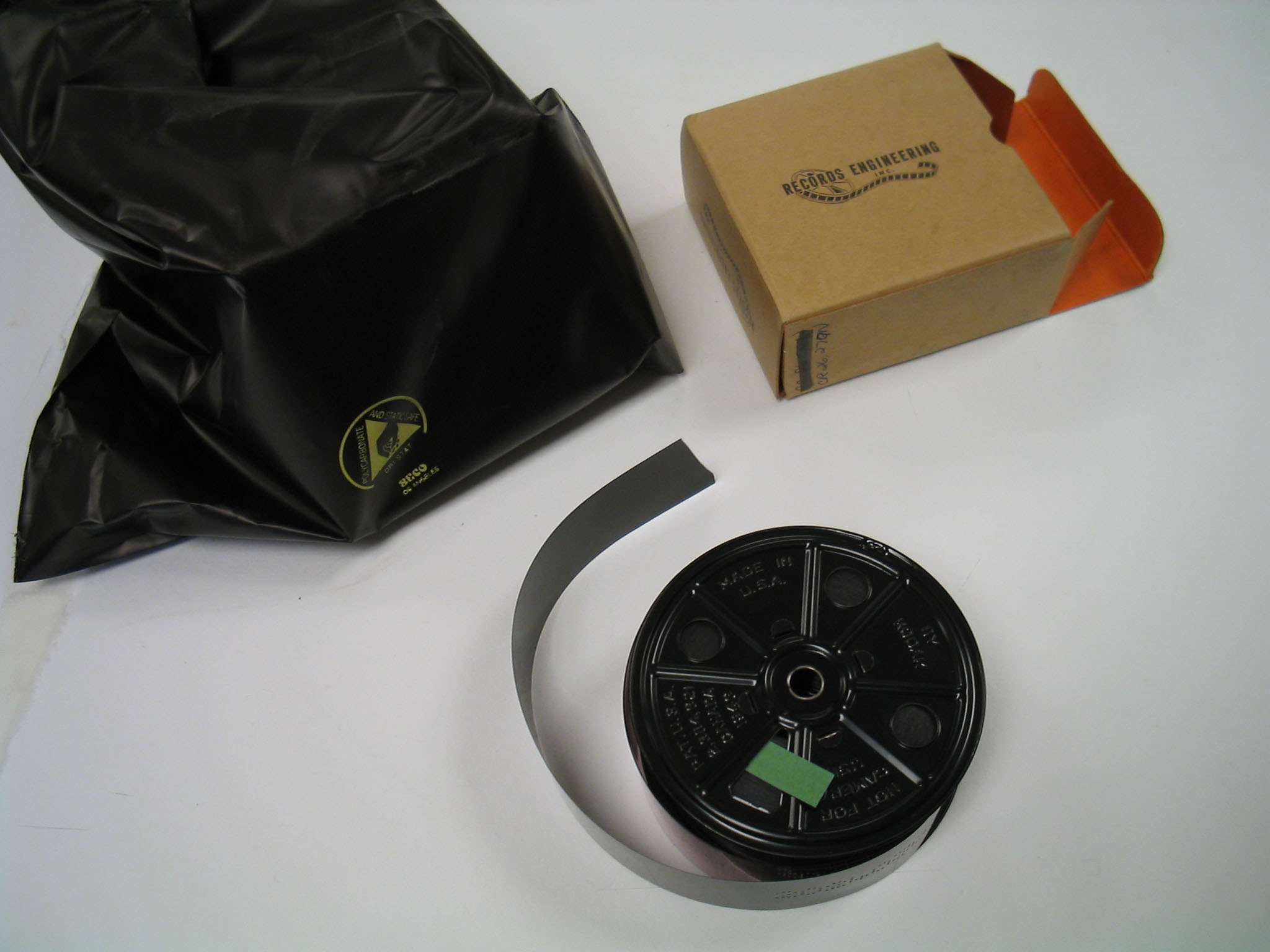
|


 Book
seperating from its binding
Book
seperating from its binding
 Close-up
of damaged binding
Close-up
of damaged binding
 Spine
removed before repairs begin
Spine
removed before repairs begin


 Another
angle of completed spine with exposed new endsheets on left
Another
angle of completed spine with exposed new endsheets on left
 Angle
showing completed book with correct spine and sewing
Angle
showing completed book with correct spine and sewing
